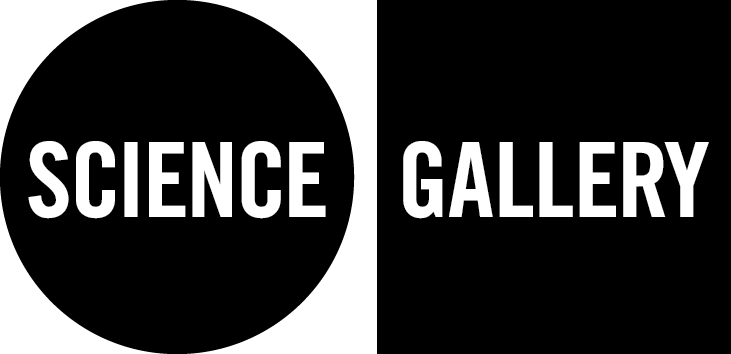Your Balanced Media Diet: rethinking our information habits through design and science
The participatory installation, Your Balanced Media Diet, commissioned by Trinity College Dublin’s Science Gallery and the ADAPT Centre, featured at Congreso Futuro in collaboration with the Science Gallery Network and the Irish Embassy Chile
Your Balanced Media Diet, Ross Dowd and Brendan Spillane, Congreso Futuro, Santiago de Chile (2025)
Our daily media consumption has become an unconscious reflex. The cascade of email newsletters, infinite scrolls through tailored feeds, and breaking news notifications leads us to skim headlines, rely on familiar sources, and fall into an information feedback loop that narrows our worldview.
The concept of a ‘media diet’ offers a compelling analogy: just as a healthy diet thrives on diversity and balance, informed media consumption requires varied and credible sources. Despite taccess to quality journalism and multiple viewpoints, we often fall prey to biases – our own and those embedded within the media we consume. How balanced is your media diet, and what does it mean to consume information healthily?
“What I valued most about working with Brendan was the sense of co-creation. Through a research methodology for measuring bias and credibility in media, we worked together to create an engaging and enlightening presentation for diverse audiences”
Artist and designer Ross Dowd teamed up with Brendan Spillane, a researcher at the ADAPT Centre for AI-Driven Digital Content Technology, to create Your Balanced Media Diet. The participatory installation draws on scientific research and creative design to provoke reflection on how we navigate today’s information ecosystem. Spillane’s research has focused on the visual presentation of news on the perception of bias, media credibility, and tools to detect disinformation.
Dowd, on the other hand, creates installations and experiences that facilitate meaningful interactions between people, and between users and their environment. Their collaboration was fostered by Science Gallery Dublin as part of their exhibition BIAS, which explored data equity, privacy, and surveillance culture.
“Working with Ross opened up new and creative ways of translating abstract ideas into engaging visual experiences that educate the public about biased media. His creativity brought the project to life and made some niece research something extraordinary”
At the heart of Your Balanced Media Diet is a fridge stocked with an assortment of food items, each representing a common news media source. Visitors can scan QR codes attached to the items to access articles from outlets ranging from Chilean staples like El Ciudadano and El Mostrador to international platforms such as Reuters and The New York Times.
The fridge is stocked with a variety of items, ranging from fruits and vegetables to familiar Chilean products like San Jorge hot dogs, Colun milk and Manteca Astra butter. Each food group metaphorically mirrors a segment of the political spectrum. Visitors are invited to examine their own media consumption habits through their food preferences. Do their choices cluster around a single shelf, or do they reflect a balanced exploration of different perspectives? The fridge serves as a metaphor for the ‘nutritional’ diversity – or lack thereof – in the information we consume daily.
“Adapting the piece to the Chilean context revealed how different its media landscape was from the original version in Ireland. To understand the spectrum of news sources, I explored how Chile’s recent history had shaped its media, speaking with local researchers and journalists.”
Accompanying the fridge is a tailored cookbook that unpacks the ‘ingredients’ that shape biased media narratives. The playful recipes draw on insights from Media Bias/Fact Check, an independent website that rates the bias, factual accuracy, and credibility of media outlets. By blending objective measures with subjective analysis, it highlights the challenges of uncovering political leanings, values, and motivations behind the media we consume.
For instance, in Chile, El Mercurio caters to a conservative, affluent readership, while Las Últimas Noticias (LUN)—from the same media conglomerate—targets a broader, entertainment-driven audience. Despite their shared ownership, these outlets demonstrate how media bias can be strategically crafted to meet diverse audience expectations.
Further enriching the installation is a spice rack that illustrates the subtle ‘flavours’ of bias that influence news reports. Visitors are prompted to think about how these ‘spices’—sometimes intentional, sometimes subconscious—are sprinkled to shape narratives and perceptions.
“Your Balanced Media Diet is a playful opportunity to take the “truths” of media agencies and algorithms with a pinch of salt.”
Much like any recipe, Your Balanced Media Diet invites audiences to grapple with the nuances of media bias. By making it both visible and interactive, the installation calls for the need for media literacy, encouraging participants to critically approach today’s complex media landscape.
This international showcase at Congreso Futuro in Santiago, Chile, enhances the reach of one of the key goals of the Science Gallery Network: fostering collaboration between artists and scientists to address pressing global challenges. By merging critical design and academic research from Trinity College Dublin, Your Balanced Media Diet empowers audiences to reflect on their media diets and how it flavours their understanding of the world.
Compiled by: Ana Prendes, Science Gallery International, 2024.
Image credits:
Your Balanced Media Diet was commissioned by Science Gallery Dublin and created with ADAPT, the Science Foundation Ireland Research Centre for AI Driven Digital Content Technology. This presentation at Congreso Futuro was made in collaboration with the Science Gallery International Network and with the support of the Irish Embassy in Chile.





